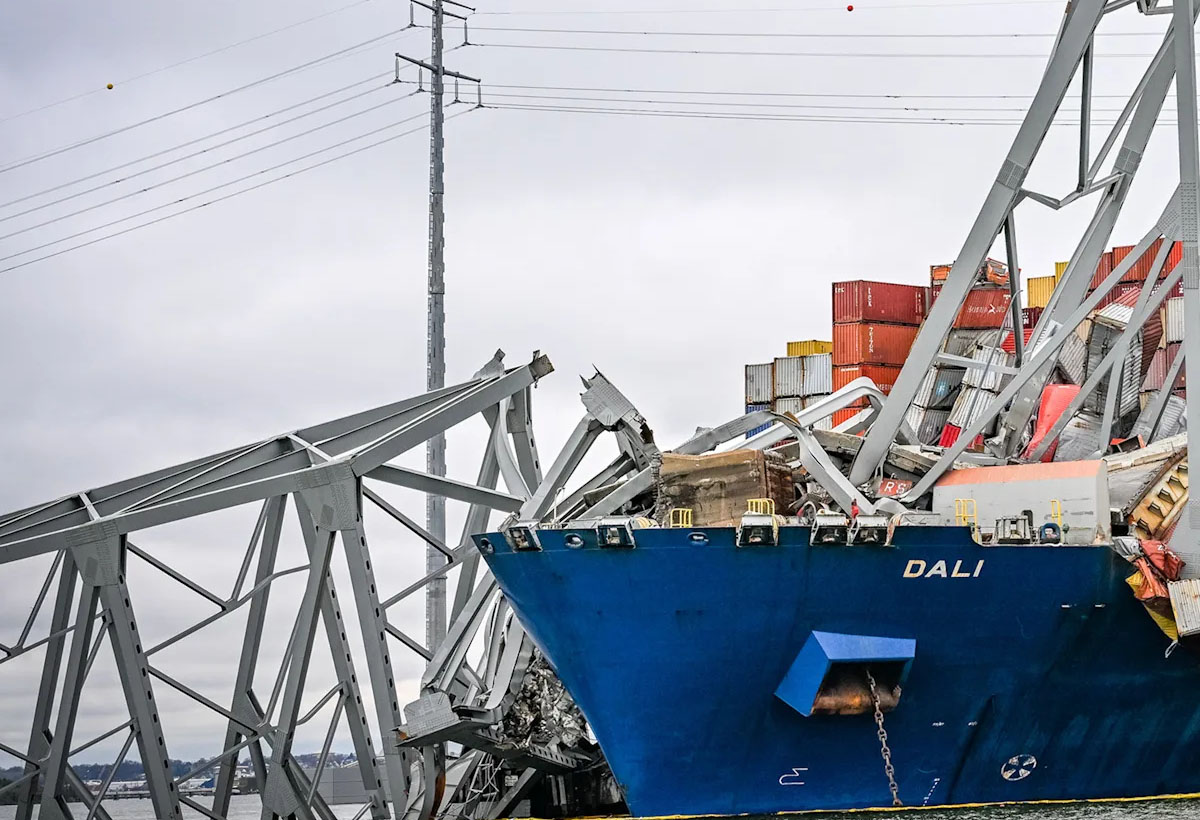
Photo Credit: Ian Kennedy
On September 18, 2024, the U.S. Department of Justice filed a $100 million lawsuit against the owner and operator of the container ship Dali, which struck and destroyed Baltimore's Francis Scott Key Bridge in March. The catastrophic incident claimed six lives and disrupted a major shipping channel for months.
The lawsuit targets Singapore-based Grace Ocean Private Limited and Synergy Marine Private Limited, alleging negligence and dangerous cost-cutting measures led to the disaster. Attorney General Merrick B. Garland stated, "The Justice Department is committed to ensuring accountability for those responsible for the destruction of the Francis Scott Key Bridge."
The March 26 collision occurred when the Dali lost power while departing Baltimore. Video footage showed the ship veering off course before ramming into a bridge support, sending a span of Interstate 695 plunging into the Patapsco River.
Benjamin Mizer, Principal Deputy Associate Attorney General, detailed the alleged failures: "The electrical and mechanical systems on the Dali were improperly configured and maintained in violation of safety regulations." The DOJ claims longstanding vibration issues with a transformer were ignored, and critical safety features were disabled.
The impact on Baltimore's infrastructure was severe. The U.S. Army Corps of Engineers reported removing 50,000 tons of bridge wreckage to restore the Fort McHenry Federal Channel. Maryland officials estimate rebuilding costs between $1.7 billion and $1.9 billion, with completion not
expected until fall 2028.
Prior to the incident, Baltimore's port handled over 50 million tons of foreign cargo annually, valued at approximately $80 billion. The shutdown disrupted supply chains and threatened thousands of jobs.
The lawsuit seeks to recover federal response costs, arguing these should be "borne by the companies that caused the crash, not by the American taxpayer," as Garland emphasized. However, it does not include bridge reconstruction expenses, which Maryland will pursue separately.
This legal action follows the shipowner's attempt to limit liability to under $44 million. The DOJ's claim paints a picture of systemic negligence, describing a "jury-rigged" ship with compromised safety systems.
As salvage efforts conclude and investigations continue, the Baltimore bridge collapse serves as a stark reminder of the critical importance of maritime safety and infrastructure protection. The outcome of this lawsuit could have far-reaching implications for shipping industry regulations and accountability.

















